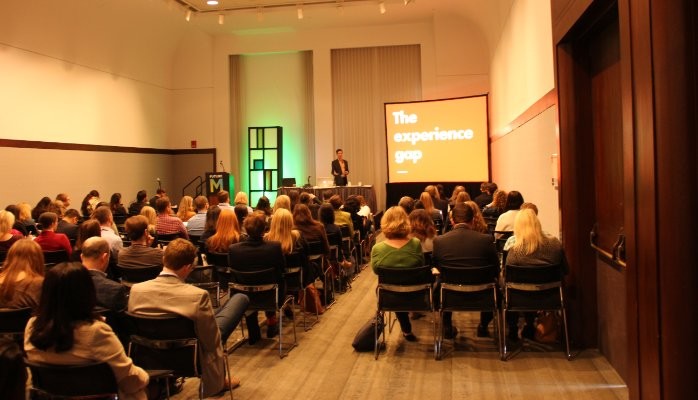
The Experience Gap: Why Brands Disappoint (at FutureM)
Brands today have the opportunity to receive more feedback and to listen more closely to their customers than ever before. So you’d think that companies’ leaders would be more in touch with the way people feel about their companies than ever before. Wrong. In fact, 80% of leaders say their brands offer a superior customer experience. Only 8% of customers agree, according to Bain & Company.
The result? A gap between what consumers expect from brands and what they actually experience when they interact with brands. It’s a dynamic I’ve dubbed “The Experience Gap” and it’s the reason so many brands are disappointing consumers time and time again.
I had the chance to speak about The Experience Gap this year at FutureM, an event that focuses on the future of marketing, to an audience of brands and their marketers. We reviewed why the gap exists, how to overcome that gap and finally looked at some brands that are working hard to close that gap.
Why Brand Experience Matters
Many brands are all promise, no proof. That means they create high consumer expectations, but when push comes to shove, the brand experience they deliver doesn’t meet them. The bad news for brands is that, in a digitally empowered era, brands that don’t deliver on expectations are either quickly forgotten – or worse sabotaged – by detractors.
What people say matters a lot. Brands with the highest levels of advocacy averaged 27% higher topline growth than the most criticized brands, according to a Boston Consulting Group study. And we know from Jack Morton’s research that 74% of the time, people are talking about their personal experiences with a brand when they advocate for it. So it pays to create stellar brand experiences for customers… in a big way. After all, 79% of sales close due to a combination of word-of-mouth recommendations and personal experiences according to McKinsey's global research.
Closing The Experience Gap
For brands to become more than a promise – or simply a set of attributes and standards – it’s helpful to think about brands as verbs. At FutureM, I presented five principles of experience, along with some quick examples, that can help demonstrate how brands are creating extraordinary experiences that customers love:
- Add Value: Uber gives consumers tangible value in exchange for loyalty all the time. Just one example is Uber Health, when it offered users the chance to request a nurse be delivered to their location to administer free flu shots before flu season.
- Invite Participation: Our client Cotton’s Road to the Runway invited fashionistas and their influencers across the country to submit looks that had a chance at becoming part of its runway show in Miami.
- User First Design: Target’s Simplicity Challenge sought to simplify healthcare for its consumers by turning to them for ideas – putting the consumer at the center and helm of the future of healthcare.
- Inspire Sharing: Our Dare to Dip initiative for Nivea asked women to bravely pledge to overcome insecurities about their bathing suit bodies to take a very public dip to kick-off the summer. Women shared photos and prompted friends to take the pledge… and the plunge… with them.
- On (Not In) The Way: IBM brought its Smarter Cities campaign to life with Smart Ideas that made the brand’s ads into helpful fixtures within the cityscape. A billboard that was a bench or an ad that was a stair ramp made ads into delights.
The ROI of Brand Experience
Closing the experience doesn’t simply reduce the disappointment of customers or give marketers warm and fuzzy feelings. It shows in business results. In a five-year study of stock performance, customer experience leaders demonstrated a cumulative 69% advantage in performance over customer experience laggards. So today, brands must learn to mind The Experience Gap, finding ways to close it and align brand promises to the proof delivered to consumers at every turn.
So next time you begin thinking about what your brand should do next, ask yourself: Does your brand give good experience?



We help companies deliver better software through exceptional QA Client Engagement Director @ QualityLogic | Accessibility Champion | Domesteader
8yGreat blog. Undoubtedly something many companies should take note of. We work with clients that understand much of what you are referring to around the ROI of brand experience but I am surprised how many just don't get it. Some have spent decades building value around their brand only to loose much of it through their website or mobile app. The gap is becoming more important to understand because the amount of tolerance users have is shrinking while their expectations of value are growing. Good stuff Ben.
Building Relationships - Changing Lives | Client Director at Kelaca
8yThe customer experience is so often overlooked yet it is what drives most of our decisions